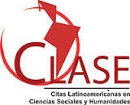Migratory Flows from Central America and United States Border Control
DOI:
https://doi.org/10.5433/2176-6665.2024v29n3e50043Keywords:
border control, forced migration, United States, Mexico, border externalizationAbstract
This article examines forced migration from Central America and criticises the US response, questioning the effectiveness of border control methods, particularly biometrics. It explores two US programmes in Mexico, Frontera Sur and Remain in Mexico. The review analysed the literature on critical security studies and migration, with a focus on Mexican productions. The results indicate diverse measures employed by the US to deter unwanted migrants, including the use of biometric borders to enhance border security and the implementation of racial and social criteria to allow or prevent the passage of certain individuals. The examination of Frontera Sur and Remain in Mexico reveals a US border externalization by making Mexico a buffer state, which hinders migratory flows and creates a vertical border that impedes migrants' journey northward. The article concludes that these measures infringe upon migrants' human rights, limiting their mobility and their pursuit of refuge in the United States.
Downloads
References
ACHARYA, Arun Kumar; MARTINEZ SANCHEZ, Maria Luisa. Trafficking of women in US-Mexican border cities: an analysis on the physical and mental health condition of victims. Journal of Trafficking and Human Exploitation, Zutphen, v. 2, n. 1, p. 1-17, june 2018. DOI: https://doi.org/10.7590/245227718x15260460483715.
AMOORE, Louise. Biometric borders: governing mobilities in the war on terror. Political Geography, Amsterdam, v. 25, n. 3, p. 336-351, mar. 2006. DOI: https://doi.org/10.1016/j.polgeo.2006.02.001.
ARAIZA, Omar; BUTTREY, Holly; ROSSI, Victoria; SPALDING, Sarah. La iniciativa de políticas públicas de Centroamérica y México: la implementación y el legado del programa frontera sur de México. Austin: The University of Texas, 2019. (Proyecto de Investigación de Políticas, n. 208). Available in: https://www.strausscenter.org/wp-content/uploads/prp_208-la-implementacio%cc%81n-y-el-legado-del-programa-frontera-sur-de-me%cc%81xico.pdf. Acesss in: 19 Jul. 2023.
BAUER, Lizbeth del Rosario Gramajo. Dos crisis que explican las dinámicas migratorias más recientes en los tres países del norte de Centroamérica. Remhu, Brasília, DF, v. 28, p. 33-50, dec. 2020. DOI: https://doi.org/10.1590/1980-85852503880006003.
BONACKER, Thorsten. Reporting security: postcolonial governmentality in the United Nations: trusteeship system. International Political Sociology, Oxford, v. 16, n. 1, mar. 2022. DOI: https://doi.org/10.1093/ips/olab030.
CABRAL, Victor. A deportação em massa como padrão para a América Central. Boletim Geocorrente, Rio de Janeiro, v. 128, 2020. Available in: https://www.marinha.mil.br/egn/boletim_geocorrente. Acesss in: 19 Jul. 2023.
CABRAL, Victor. Corredor interoceânico do Istmo de Tehuantepec: megaprojeto de desenvolvimento do México e barreira de migrantes. Geopuc, Rio de Janeiro, v. 14, n. 27, p. 168-92, jan./july 2021. Available in: https://geopuc.geo.puc-rio.br/cgi/cgilua.exe/sys/start.htm?from%5Finfo%5Findex=11&infoid=255&sid=37. Acesss in: 10 Nov. 2021.
CABRAL, Victor. Nova política migratória no lugar de tarifas: o acordo de EUA e México. Boletim Geocorrente, Rio de Janeiro, v. 96, n. 4, 2019. Available in: https://www.marinha.mil.br/egn/boletim_geocorrente. Acesss in: 27 Ago. 2023.
CASTILLO RAMÍREZ, Guillermo. Migración forzada y procesos de violencia: los migrantes centroamericanos en su paso por México. Revista Española de Educación Comparada, Madrid, n. 35, p. 14-33, 2020. DOI: https://doi.org/10.5944/reec.35.2020.25163.
CASTLES, Stephen. 2007. The Migration-asylum nexus regional approaches. In: KNEEBONE, Susan; RAWLINGS-SANAEI, Felicity. New regionalism and asylum seekers: challenges ahead. New York: Berghahn Books, 2007. p. 25-42. DOI: https://doi.org/10.2307/j.ctv287sc94.7.
CBP – CUSTOMS AND BORDER PROTECTION. 2024. Say hello to the new face of efficiency, security and safety: introducing biometric facial comparison technology. Washington, D.C: U.S. CBP, 2024. Available in: https://www.cbp.gov/travel/biometrics. Acesss in: 27 Fev. 2024.
CBP – CUSTOMS AND BORDER PROTECTION. Southwest land border encounters. Washington, D.C: U.S. CBP, 2023. Available in: https://www.cbp.gov/newsroom/stats/southwest-land-border-encounters. Acesss in: 27 Fev. 2024.
CRESCE 77% n. de menores que cruzaram fronteira dos EUA sozinhos. G1, São Paulo, 10 oct. 2014. Available in: https://g1.globo.com/mundo/noticia/2014/10/cresce-77-n-de-menores-que-cruzaram-fronteira-dos-eua-sozinhos.html. Acesss in: 27 Fev. 2024.
LEÓN, Jason de. The land of open graves: living and dying on the migrant trail. Oakland: University Of California Press, 2015.
ELDEN, Stuart. Governmentality, calculation, territory. Environment And Planning D., Thousand Oaks, v. 25, n. 3, p. 562-580, 2007. DOI: https://doi.org/10.1068/d428t.
ELDEN, Stuart. Legal terrain: the political materiality of territory. Review OF International Law, London, v. 5, n. 2, p. 199-224, 2017. DOI: https://doi.org/10.1093/lril/lrx008.
ELLIS, Blake; HICKEN, Melanie. Migrant children in open-air desert camps are suffering from hunger and hypothermia, court documents say. CNN, Atlanta, 29 feb. 2024. Available in: https://edition.cnn.com/2024/02/29/politics/migrant-children-sheltering-in-porta-potties-court-filing-alleges-invs/index.html. Acesss in: 27 Fev. 2024.
EPSTEIN, Charlotte. Guilty bodies, productive bodies, destructive bodies: crossing the biometric borders. International Political Sociology, Oxford, v. 1, n. 2, p. 149-164, 2007. DOI: https://doi.org/10.1111/j.1749-5687.2007.00010.x.
JONES, Reece. Violent borders: refugees and the right to move. London: Verso, 2016.
JUNQUEIRA, Karina; MOREIRA, Ana Camila. Estado de exceção permanente pós 11/09: as implicações da legislação de emergência estadunidense. Mural Internacional, Rio de Janeiro, v. 12, apr. 2021. DOI: https://doi.org/10.12957/rmi.2021.54038.
NAÇÕES UNIDAS. Fluxo de migrantes e refugiados dispara no México. Onu News, Rio de Janeiro, 5 jan. 2022. Available in: https://news.un.org/pt/story/2022/01/1775452. Acesss in: 27 Fev. 2024.
NEVES, Alex Jorge das; ROCHA, Gustavo de Souza; SILVA, José Camilo da. Políticas de segurança pública nas regiões de fronteira dos Estados Unidos e México: estratégia nacional de segurança pública nas fronteiras (Enafron). Brasília, DF: Secretaria Nacional De Segurança Pública, 2020. Available in: https://www.idesf.org.br/wp-content/uploads/2020/10/politicas-de-seguranca-nas-fronteiras-dos-estados-unidos-e-mexico.pdf. Acesss in: 04 Fev. 2024.
PALLISTER-WILKINS, Polly. How walls do work: security barriers as devices of interruption and data capture. Security Dialogue, Thousand Oaks, v. 47, n. 2, p. 151-164, 2016. DOI: https://doi.org/10.1177/0967010615615729.
POMBO, María Dolores París; ORTIZ, Laura Velasco; DELGADO, Camilo Contreras. Las caravanas y otras formas de movilidad colectiva en el nuevo contexto migratorio. In: POMBO, María Dolores París; ORTIZ, Laura Velasco; DELGADO, Camilo Contreras. Caravanas migrantes y desplazamientos colectivos en la frontera México-Estados Unidos. Tijuana: El Colegio De La Frontera Norte, 2021.
RADZIWINOWICZÓWNA, Agnieszka. Bare life in an immigration jail: technologies of surveillance in U.S. pre-deportation detention. Journal of Ethnic and Migration Studies, Abingdon, v. 48, n. 8, p. 1873-1890, 2022. DOI: https://doi.org/10.1080/1369183x.2020.1796266.
RAMPTON, Roberta; ORÉ, Diego. Trump calls off tariffs after Mexico vows to tighten borders. Reuters, New York, 8 june 2019. Available in: https://www.reuters.com/article/iduskcn1t71qy/. Acesss in: 27 Fev. 2024.
RODRÍGUEZ CHÁVEZ, Ernesto. Migración centroamericana en tránsito irregular por México: nuevas cifras y tendencias. Guadalajara: CANAMID, 2016. (Technical Report, n. 14). DOI: https://doi.org/10.13140/rg.2.2.28698.44483/1.
ROJAS WIESNER, Martha Luz; WINTON, Ailsa. Precarious mobility in Central America and Southern Mexico: crises and the struggle to survive’. In: MENJÍVAR, Cecilia; RUIZ, Marie; NESS, Immanuel (ed.). The Oxford handbook of migration crises. London: Oxford University Press, 2019. DOI: https://doi.org/10.1093/oxfordhb/9780190856908.013.38.
ROSIÈRE, Stephane. Mundialização e teicopolíticas: análise do fechamento contemporâneo das fronteiras internacionais. Boletim Gaúcho de Geografia, Porto Alegre, v. 42, n. 2, p. 369-388, maio 2015.
RYGIEL, Kim. Governing borderzones of mobility through e-borders: the politics of embodied mobility’. In: SQUIRE, Vicki. The contested politics of mobility. London; New York: Routledge, 2010. p. 143-168.
TAZZIOLI, Martina. Governing migrant mobility through mobility: containment and dispersal at the internal frontiers of Europe. Environment And Planning C., Thousand Oaks, v. 38, n. 1, p. 3-19, 2020. DOI: https://doi.org/10.1177/2399654419839065.
UNHCR – THE UN REFUGEE AGENCY. The 1951 refugee convention. Geneva: UNHCR, 1951. Available in: https://www.unhcr.org/about-unhcr/who-we-are/1951-refugee-convention. Acesss in: 04 Fev. 2024.
UNITED STATES OF AMERICA. Biometrics. Washington, D.C: Department of Homeland Security, 2024a. Available in: https://www.dhs.gov/biometric. Access in:
UNITED STATES OF AMERICA. Department of State. Safety & security of U.S. borders: biometrics. Washington, D.C: U.S. Department of State; Bureau of Consular Affairs, 2024b. Available in: https://travel.state.gov/content/travel/en/us-visas/visa-information-resources/border-biometrics.html#:~:text=what%20this%20means%20%2d%20traveling%20to,officer's%20interview%20with%20the%20applicant. Acesss in: 25 Fev. 2024.
VARELA, Amarela. México, de “frontera vertical” a "país Tapón": migrantes, deportados, retornados, desplazados internos y solicitantes de asilo en México’. Iberoforum, Ciudad de México, v. 14, n. 27, p. 49-76, 2019. Available in: https://iberoforum.ibero.mx/index.php/iberoforum/article/view/124. Acesss in: 27 Fev. 2024.
VELASCO ORTIZ, Laura; HERNÁNDEZ LÓPEZ, Rafael A. Salir de las sombras: la visibilidad organizada en las caravanas de migrantes centroamericanas. In: POMBO, María Dolores París;
ORTIZ, Laura Velasco; DELGADO, Camilo Contreras. Caravanas migrantes y desplazamientos colectivos en la frontera México-Estados Unidos. Tijuana: El Colegio De La Frontera Norte, 2021.
WÆVER, Ole. Securitization and desecuritization. In: LIPSCHUTZ, Ronnie D. On security. New York: Columbia University Press, 1995. p. 46-86. Available: https://dl1.cuni.cz/pluginfile.php/872615/mod_resource/content/1/waever.pdf. Acesss in: 11 Apr. 2023.
WALKER, Margath. The other U.S. border?: techno-cultural-rationalities and fortification in southern Mexico. Environment And Planning A., Thousand Oaks, v. 50, n. 5, p. 948-968, 2018. DOI: https://doi.org/10.1177/0308518x18763816.
WILSON, Christopher; VALENZUELA, Pedro. Mexico’s southern border strategy: programa frontera sur. Washington, D.C: Wilson Center; Mexico Institute, 2014. Available in: https://www.wilsoncenter.org/sites/default/files/media/documents/publication/mexico_southern_border_strategy.pdf. Acesss in: 27 Fev. 2024.
Published
How to Cite
Issue
Section
License
Copyright (c) 2024 Victor Cabral

This work is licensed under a Creative Commons Attribution 4.0 International License.
Copyright on articles published in Mediações belongs to the author(s): in the case of partial or entire republication of the original publication, we ask author(s) to indicate the original publication in the periodical.
Mediações uses the Creative Commons Attribution 4.0 International license, which allows Open Access, enabling any user to read, download, copy and disseminate its content so long as adequately referenced.
The opinions expressed by the author(s) are their sole responsibility.
Funding data
-
Coordenação de Aperfeiçoamento de Pessoal de Nível Superior
Grant numbers 88887.851405/2023-00































